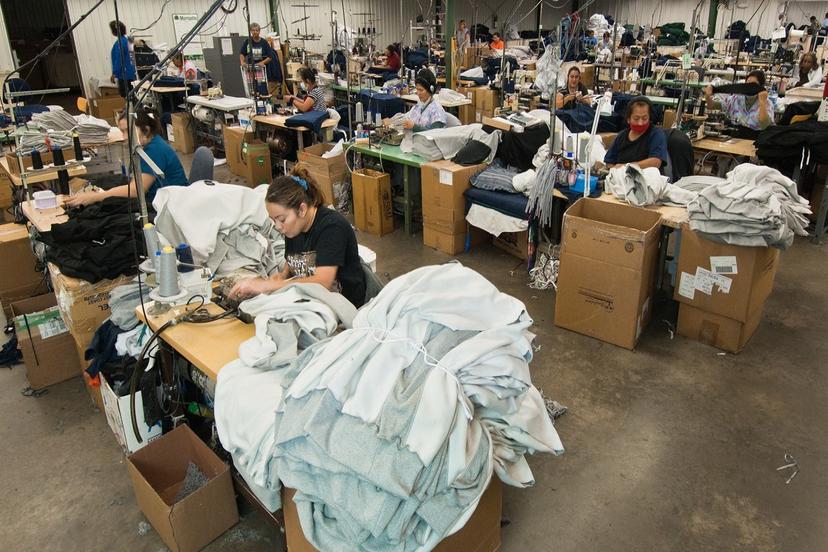Textiles

Industry Outlook
The U.S. Department of Labor projects a decline in employment in the textiles, apparel, and furnishings products industry through 2028. Factors contributing to the decline include increased worker productivity due to automation, fierce competition, mergers, and rising imports. When trade quotas were lifted in 2005, textile and apparel imports increased due to cheap labor markets in countries like China which continue to make it difficult for U.S. firms to compete.
The textile industry was also affected by the coronavirus pandemic, which began in Wuhan, China, in 2019. According to a report by researcher IBISWorld, business closures and other pandemic disruptions hampered imports from India in 2020. Textile mills industry operators shifted to producing face masks and medical gowns to meet the surge in demand. The National Council of Textile Organizations reported that the "American textile industry and its 585,000 workers have been the driving force behind the rapid mobilization to convert production lines and materials to supply personal protective equipment (PPE) as part of a national effort to stop the spread of COVID-19." At the same time, textile industry operators and employees were stretched thin due to budget constraints, short production timeframes, and staggered work shifts with fewer employees to prevent the spread of the virus. Overall, the industry was projected to have a 6.1 percent drop in growth from 2015 through 2020.
The distribution of the COVID-19 vaccine in 2021 is expected to improve the economy as businesses reopen and resume operations. The textile mills industry will have mild growth through 2025, according to the report. Demand for automotive technical textiles is expected to grow as the automobile industry rebounds with increases in new car sales. The price of synthetic fiber is projected to grow in the coming years, but imports, which comprise half of the domestic demand, will fall due to a weakening of the U.S. dollar.
The textile industry remains an important employer and contributor to the U.S. economy. According to the National Council of Textile Organizations (NCTO), as of early 2021, the industry employed a total of 585,000 workers in textile mills, textile product mills, and in the apparel industry. The NCTO further reported that in 2019, the U.S. textile industry exported fiber, textile, and apparel products valued at $29.1 billion to more than 200 countries, which was an increase over the exports value ($28 billion) in 2015. In 2015, the United States was the fourth largest exporter of fibers, yarns, and fabrics; by 2019, the U.S. had become the second largest exporter of textile-related products in the world. In addition, U.S. textile mills have increased labor productivity by 69 percent since 2000.
Employment opportunities in the textile industry will come about as older workers retire or change jobs. Some textile branches, such as producers of industrial carpets, fabrics, and specialty yarns, are highly automated and may remain competitive due to lower production costs coupled with specialized facilities. The United States remains the world leader in discovering new fibers and new uses for high-tech textiles, indicating that jobs may be available for textile scientists and researchers. New jobs in apparel business will open mainly as current workers leave the field.
The North American Free Trade Agreement (NAFTA) and the Agreement on Textiles and Clothing of the World Trade Organization (WTO) opened export markets for textiles produced in the United States, but at the expense of American jobs, particularly low-skill, low-wage jobs. There is a general nervousness and pessimism in the textile industry surrounding the WTO agreement, and workers face job insecurity. Some positive effects of NAFTA have included easier imports to Canada and Mexico and retention of high-tech, computer-oriented, and science-related jobs in the United States, though it is not clear that this successfully balances out the massive job loss.
The textile industry continues to create new products and expand its client base by supplementing other industries. Recent developments include producing materials for highway construction, erosion control, and space exploration. New methods of spinning, new weaving machines, better printing processes, and increased adaptation of computers to manufacturing operations have made the U.S. textile industry one of the most efficient and productive in the world. As new machines and methods are developed and put into place, technical jobs will increase, but machine operating jobs will decrease. Computers have also improved the marketing aspects of the textile industry. Computer programs have created efficient electronic linkages among manufacturers, wholesalers, and retailers. These programs shorten the response time between the demand for products and the supply of them, saving time and money.
Concerns for the environment have led to efforts to reduce the amount of pollution generated by manufacturing plants. For the textile industry, environmental awareness can mean such steps as changing ingredients in dyes, building a water purification system, making a financial contribution for the construction of a municipal waste-treatment facility, or studying the recycling of liquids. From 2006 to 2018, the U.S. textile and apparel industry invested nearly $19 billion in new plants and equipment. As reported by the NCTO, U.S. manufacturers have recently "opened new facilities through the textile production chain, including recycling facilities to convert textile and other waste to new textile uses and resins." In the future, there will be an increased demand for people who are trained to protect the natural environment, such as chemists, chemical laboratory technicians, environmental law specialists, environmental engineers, and other specialists.
